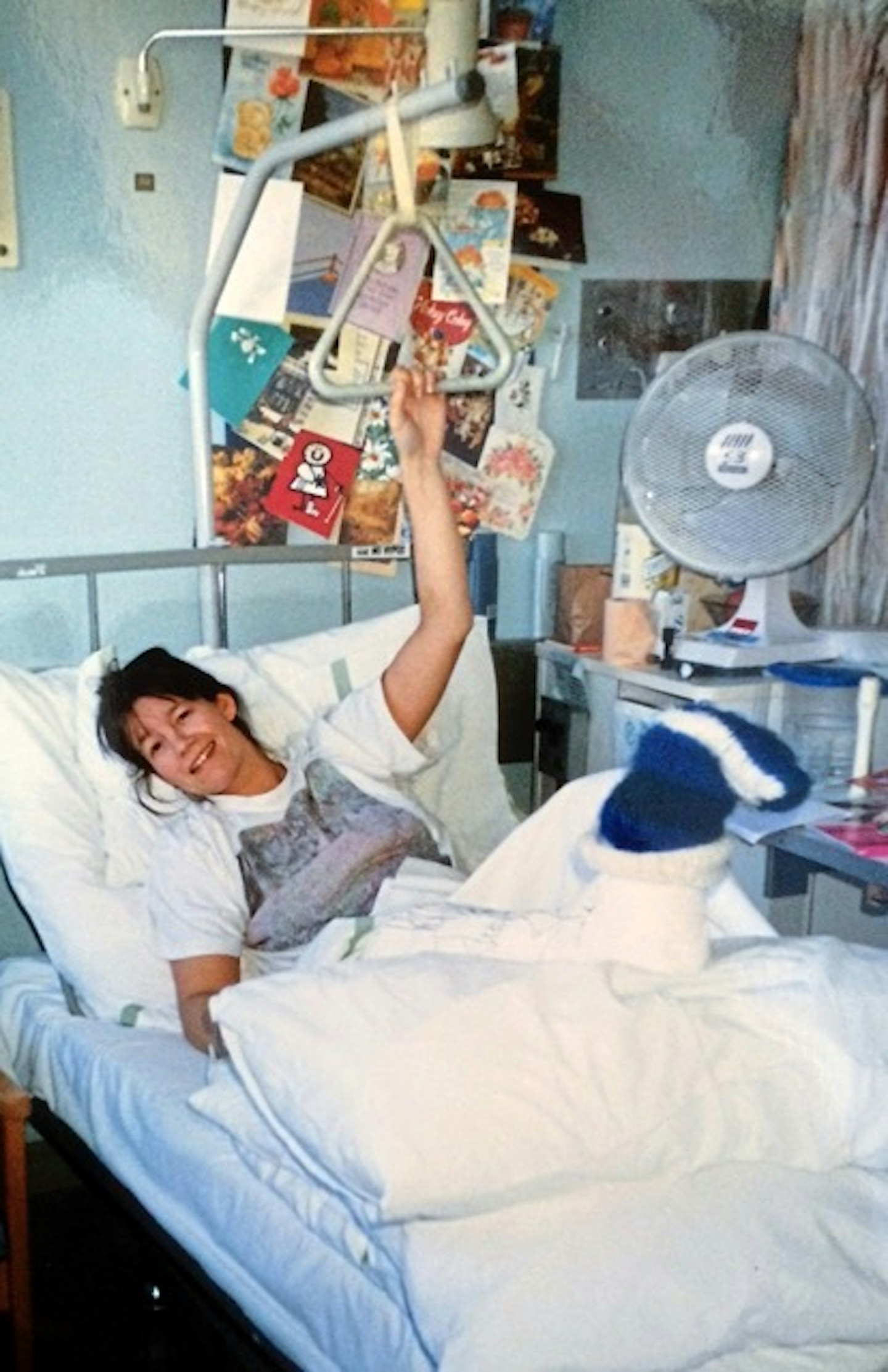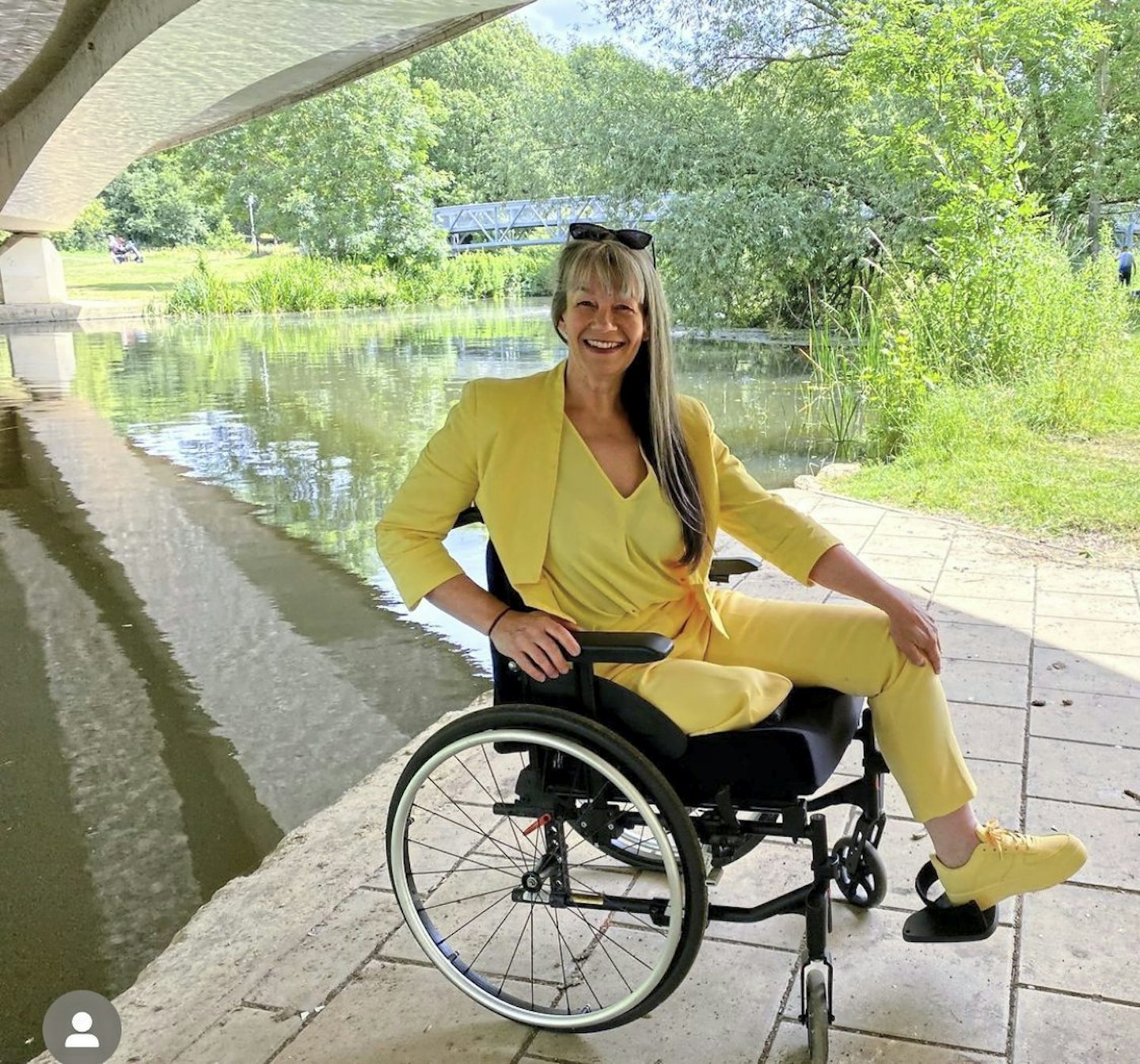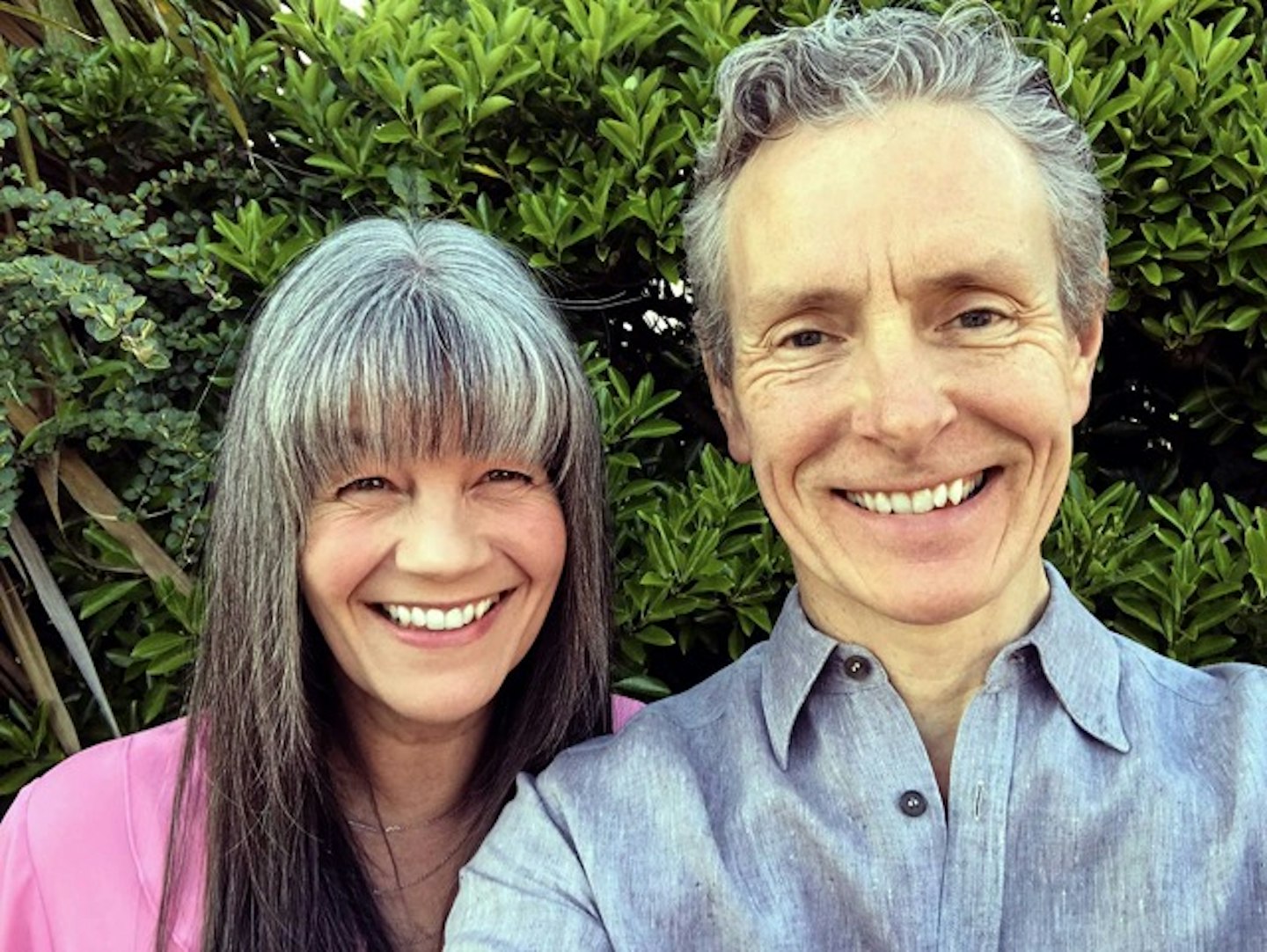One jump on a trampoline at 30 cost me my leg, but I would eventually bounce back… By Nancy Harris, 57
I stood in the sports hall and listened to the instructor.
‘Right, Nancy,’ he said to me. ‘You’re next.’
I worked as a secondary-school PE teacher, and I was on a course to renew my qualification to teach trampolining.
It was something I’d done loads of times before, so I wasn’t worried as I climbed up on to the trampoline and began to go through a practice routine, which included lots of difficult moves.
But as I performed one move, something went wrong, and as I accidentally landed straight down on my right leg, pain shot through my knee.

There were gasps as I crumpled face-first on to the trampoline.
'Nancy, are you OK?' the instructor asked. ‘Can you sit up?’
But I was in such agony, I could barely speak, let alone move.
An ambulance was called and I was rushed to the nearest hospital for an X-ray.
'You've broken your tibial plateau, which is your knee joint,’ the doctor told me.
'I don't understand. How could I have broken it?' I asked. 'I didn't fall off the trampoline or hit my leg.’
'We suspect the impact of landing straight down on your leg caused the bones to compress and break,’ he explained.
He told me I’d need an operation the following day, so I called my husband who was expecting me home for dinner.
After the operation to realign the joint, I was discharged with my leg in plaster. We lived in a second-floor flat, so the next weeks were challenging.
It was frustrating to go from being a fit and active 30-year-old, to needing help getting showered and dressed.
My husband and I had only married 10 weeks earlier, so it wasn’t the start to married life I was after either.
But while I knew it was going to take time for my knee to heal, months passed with no improvement and I knew something wasn’t right.
I developed drop foot, which meant I had difficulty lifting the front of my foot, and then osteomyelitis — a swelling of the bones caused by an infection.
As a result, I had 14 operations over 18 months, but none of them worked.
My leg just got weaker and weaker, until eventually I went for a second opinion at another hospital.
‘Your lower leg has died,’ the consultant there told me. ‘You've got two choices. Either we can break all the bones in your leg, try a brace and see if that stretches them out. Or we can amputate from above the knee.’
How could I have broken it?
I was speechless. How had landing awkwardly on a trampoline led to this?
After discussing it with my family, I decided to go for the amputation.
It sounded drastic, but I was fed up of being in pain and I missed doing sport and teaching PE.
After the operation, I learnt to use a prosthetic.
Six months later, I went back to work, but it wasn’t the same.
The pupils were rehearsing for a summer term dance show and I was struggling to demonstrate the choreography.
'I can't do it,' I told my husband, in tears one night.
After struggling through to the end of term, I left and focused on starting a family with my husband instead.
It was something I’d always wanted and my accident had put it on hold.
In time, I fell pregnant and had a son.
But while being a mum gave me back my purpose, I was still struggling.
While I could play with him on the floor, I couldn't carry him or chase after him.

When we were out, I’d hide my prosthetic under long skirts, and use the pram as a shield to stop people staring at me.
The pregnancy and being less active meant I’d also put on three stone, which made me even more self-conscious.
And I continued to pile on the pounds after falling pregnant again.
After my daughter arrived, I was talking to a friend about my weight and she said: ‘How about swimming? There are some postnatal classes at the leisure centre. We could go together.’
'I’ve got to do something,’ I said. ‘Let’s give it a go.’
My heart was pounding as we arrived for our first class. I couldn’t use my crutches poolside, so I had to shuffle from the changing room and through the footbath on my bum.
'I'll just climb over you then,’ another swimmer huffed, pushing past me.
In that moment, I felt at the bottom of the heap and I wanted to go home.
The class itself was no less daunting. I was the only disabled mum and I could sense the others looking at me in my swimming costume.
I’ve got to do something
After that, I forced myself to go every now and then, but gave up when it didn’t help with either my confidence or my weight.
As my kids grew into teenagers, I made sure to constantly tell them: ‘You are beautiful. You are not scared. You can do anything.’

But I knew I wasn’t living by those mantras myself.
Finally, as I approached 50 and split from my husband, I finally sought help.
I had some therapy and, from there, I began making some radical lifestyle changes.
Firstly, I joined a gym and successfully managed to lose three stone.
I swapped my long, floaty dresses for short, tight-fitting clothes that showed my leg, and I quit dying my hair and embraced being grey.
By then, I’d also had to start wearing hearing aids, but instead of hiding them, I got one that was bright red and another that was bright silver.
'You look amazing, Nancy!' my friend said, when she saw my transformation.
And finally, I’d started to feel it too.
When I found a wheelchair tennis group near to where I lived in Bedfordshire, I joined it.
And while I wasn't great at it, they were a lovely organisation, and they’d send a newsletter with opportunities for disabled people.
One day, there was an email about a disability talent agency called Zebedee who were looking for models.

When I showed it to my daughter, she said: ‘You have to do it!’
'I don't know,' I replied, hesitantly.
'Honestly, Mum, you're always telling us to take a chance. Be brave,’ she insisted. ‘You'll never know unless you apply.’
So, with both my kids egging me on, I sent off the application and was invited to meet an agent in London.
They signed me up that day, and before long the work started coming in.
Over the last seven years, I’ve modelled for some amazing brands and worked with some fantastic photographers, including one in particular called Zuzu Valla, who have transformed my self-esteem.
I actually feel more confident now as an amputee than I did before the accident.
I've found love again with my incredible partner, Steve, and I’m working as a mental health counsellor too, which is incredibly rewarding.
That day on the trampoline changed my life forever. And while it’s taken me a long time to get here, I’m happier and more fulfilled than ever.
I’m no longer hiding myself away. Instead I’m living by the mantras I instilled in my children — I’m beautiful, I’m not scared, and I can do anything!
